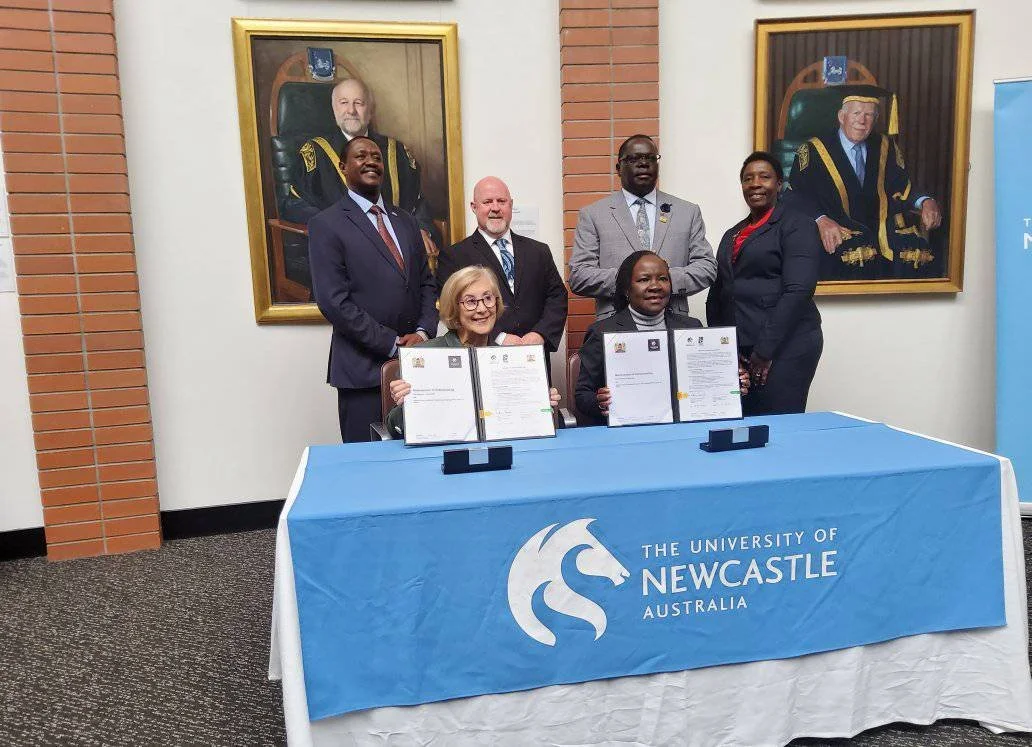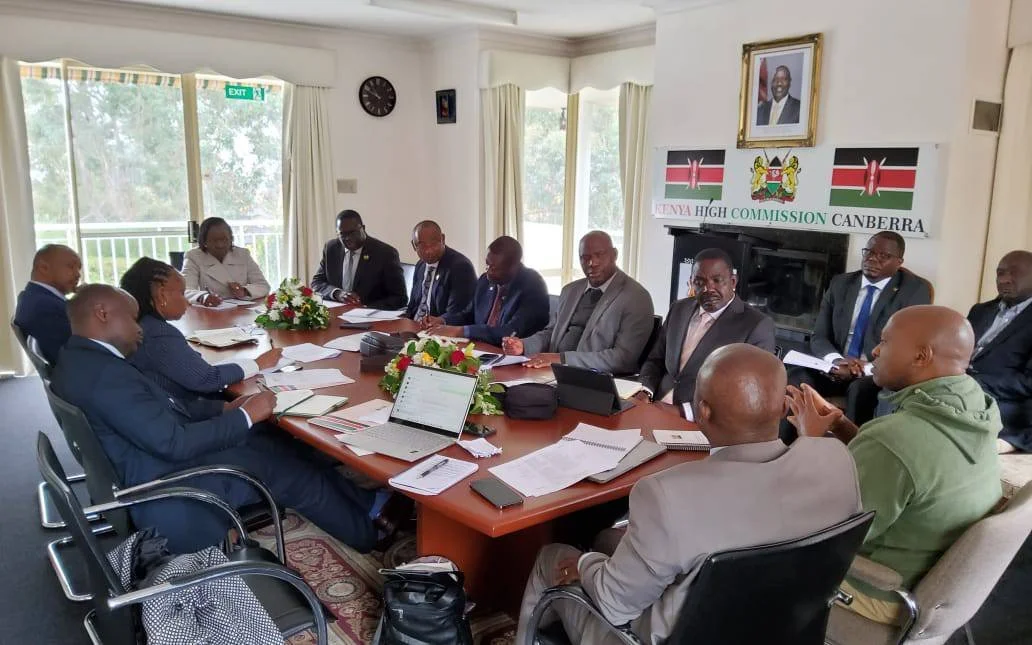Hands-On, World-Class: How Kenya Is Reimagining TVET with Australia’s Support
In a landmark visit that underscored Kenya’s commitment to transforming its Technical and Vocational Education and Training (TVET) landscape, Principal Secretary for TVET, Dr. Esther Muoria, embarked on a high-impact tour of Australia. The visit, made possible through the tireless efforts of H.E. Ambassador Wilson Kogo, brought together government, industry, and academic institutions in a united pursuit of global-standard vocational education.
1. Sealing Strategic Ties with the University of Newcastle
The journey began with a historic milestone—the signing of a Memorandum of Understanding (MoU) between Kenya’s State Department for TVET and the University of Newcastle, officiated by Chancellor Hon. Patricia Forsythe. Central to this partnership is the capacity building of trainers through the Kenya School of TVET, a crucial pillar in enhancing quality and relevance in vocational education.
Strategic discussions with the University’s School of Education and School of Business focused on joint curriculum development, academic exchange programs, and aligning qualifications frameworks between Kenya and Australia. These efforts aim to ensure the seamless recognition of Kenyan qualifications in Australia, enhancing graduate mobility and unlocking global opportunities for Kenyan youth.
source @PS Tvet Esther Muoria
2. Advancing Workforce Readiness with Signet Institute, Melbourne
In Melbourne, PS Muoria formalized another key collaboration through a Letter of Intent with Signet Institute, targeting alignment with Australia's renowned TAFE (Technical and Further Education) system. The focus: harmonizing TVET qualifications to support Kenyan graduate integration into high-demand sectors like construction, engineering, and healthcare.
Amb. Kogo emphasized the mutual value of such partnerships, highlighting Kenya’s talented youth and the potential to meet both local and global workforce needs. Signet’s commitment to quality training and international linkages marked a significant leap toward global employability for Kenyan TVET graduates.
3. Parliamentary Courtesy Call and Shared TVET Reforms
A pivotal moment followed as PS Muoria, together with Amb. Kogo, paid a courtesy call to Hon. Gayle Tierney MP at the Parliament of Victoria, representing the Department of Jobs, Skills, TAFE, Industry and Regions.
Discussions centered around Kenya’s sweeping TVET reforms—modularized learning, competency-based education, and strengthened industry linkages—which closely mirror the Australian TAFE model. Both parties agreed on the critical need for training that responds to real-time labour market demands, supported by Sector Skills Committees and data-driven strategies. The meeting set the stage for long-term, sustainable partnerships between Kenya’s TVET institutions and Australia’s TAFE sector.
source @PS Tvet Esther Muoria
4. Inspiration from the Ground Up at Chisholm Institute
At Chisholm Institute in Melbourne, the delegation witnessed excellence in action. From advanced mechatronics labs to immersive, hands-on assessments, the institution showcased what workforce-ready training looks like. The use of real-industry tools and continuous practical assessment was particularly impressive—and something Kenya’s TVET system is set to emulate.
Exchange programs and joint training initiatives between Chisholm and Kenyan institutions could become the bedrock of a dynamic, skill-driven future.
5. Unlocking Niche Skillsets in Agriculture and Viticulture
The tour extended into Australia’s agricultural heartlands, where PS Muoria visited a leading sheep-rearing farm. Guided by Mr. Don Macdonald, the delegation explored critical skills in shearing and wool classing—an area where demand far outpaces supply in Australia.
This eye-opening experience confirmed the value of structured, hands-on training and set in motion plans to strengthen sheep handling instruction in Kenyan TVET institutions, opening pathways for skilled migration and global competitiveness.
A visit to a renowned winery followed, introducing the delegation to the art and science of grape cultivation and wine processing. With global demand rising and labour shortages looming, viticulture emerged as a promising frontier for Kenya’s TVET curriculum. The sector offers untapped potential in agro-tourism, innovation, and entrepreneurship.
6. Early Skilling: Lessons from St. Mary’s MacKillop College
In Canberra, the delegation was warmly welcomed by St. Mary’s MacKillop College, where students as young as Year 7 engage in practical vocational training. From hospitality and beauty therapy to construction and healthcare, learners gain hands-on experience aligned with real-world demands.
What stood out was the school’s strong emphasis on competency-based assessments—moving away from traditional examinations toward practical, measurable skills. This model, focused on “learning by doing,” offers valuable lessons for Kenya’s own education reforms.
7. A Kenyan Success Story: Luke Mukindia
Closing the visit on an inspiring note, PS Muoria and the delegation met Luke Mukindia, a Kenyan TVET alumnus thriving in Australia’s hospitality industry. Speaking at the Kenyan Chancery in Canberra, Mr. Mukindia credited his TVET training for laying a strong foundation for his current role. He urged Kenyan institutions to integrate complementary units that elevate client experience and service delivery.
His success story reaffirmed the global potential of Kenya’s TVET graduates—and the critical role that international exposure and quality training play in unlocking that potential.
source @PS Tvet Esther Muoria
Dr. Esther Muoria’s mission to Australia was more than a diplomatic visit; it was a catalyst for transformation. From university halls to farms, factories, and schools, every engagement reinforced the shared vision of empowering youth with skills that transcend borders. As Kenya positions its TVET sector for global relevance, partnerships like these will pave the way for innovation, mobility, and sustainable economic growth—driven by skilled, future-ready graduates.










